The effect of globalization and digitization is that our work is more complex and global. The speed of change is faster than ever. To stay ahead of competition, teams must communicate and collaborate more effectively, efficiently and inclusively across the globe. That is why Global Business Academy has created 8 competencies to increase global team performance. Vital, now that we continue to work remotely with team members who are thousands of miles and cultures apart. The fourth competency we discuss in this series is: Self Management.
“Why is the boss not the boss?”
In order to understand self-management from an international perspective, it is important to first understand your own work culture. The Danish top the list of the flattest work hierarchy globally. The Dutch are not far behind. If you don’t greet the receptionist in the Netherlands, you are arrogant. Chinese people regularly ask me “why is the boss not the boss here?” They don’t understand. Even the king wears a simple tie when the mayor wears a mayoral chain. “Which one is the king?” whispers the Indian invitee standing nearby.
Freedom
Employees who work in flat hierarchy country are used to independence. When a boss gives them too little freedom and doesn’t respond positively to their input, they feel demotivated. The boss says: “If you don’t understand, tell me. If you don’t know, tell me. If you can’t do it, tell me. If there are any problems, tell me. If you have any ideas, tell me. I am your servant leader, tell me what you need ”.
The four components of Self Management
As soon as flat hierarchy cultures start working with hierarchical cultures – who are used to the boss telling them what to do – you have a challenge. Quickly, complaints arise. “Why doesn’t my colleague just come to me and ask me questions?” In the meantime, the colleague feels completely lost. But vice versa, there are challenges too. “Why is my boss micro-managing me all the time?” “Why won’t my boss listen to my input?”. And the boss feels like their employee is questioning their authority.
Self management, and the thoughts, expectations and actions that come with it, are culturally influenced. We identified four components for self-management that create the greatest growth opportunities for global team performance:
- Strengths, aspirations and powers: what are these? How do they strengthen the team and the organization?
- Knowledge: how do you search for it? And how do you share it?
- Working independently: what are your expectations and actions that define working independently? What is it for the other team members. How do you encourage it in your team members? How do you bring it together and create a team culture that works for all?
- Ownership and accountability: how do you give and take it?
Passion and purpose
The most beautiful of the four is the first – Aspirations and Powers – because then you are really working with someone’s passion, aspiration and strength. And if you’re lucky, even purpose. This isn’t rocket science, but how often do you do this with your team members? Can you answer it? Can they answer this? Do you guide them. This is not a cultural thing either: it affects every employee. The only difference with your international team members is that some may be less likely to share it with you. Or very quickly, in the case of an Eastern European team member who, in his third week of employment said his ambition was to take over his boss’ job.
Nice idea, but does it work?
By sharing knowledge, we quickly say: “just call Andy, he knows everything about xyz”. But some cultures are more restrained. They do not dare to call Andy at all. Your solution is well thought out, but there is one thing wrong: cultural differences. Calling Jan just like that is like climbing Mount Everest. Sharing knowledge and encouraging teams to search for knowledge must be cultivated in steps.
Ownership, accountability, working independently: if you are used to following the assignments of your boss, these are big steps. Once you know the other person’s frame of reference and where you want them to go, you have an effective development path. And in this way you always take a step further in an effective collaboration.

